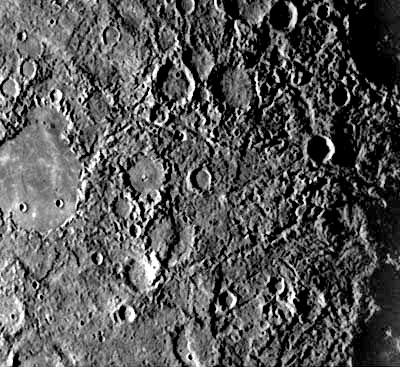3
3488
Guest
The LRO has observed the Ina D Caldera in Lacus Felicitatis.
First really noticed during the Apollo missions, Ina D Caldera only 3 KM wide was considered a young non impact feature, pointing to 'recent' or even 'current' lunar volcanism.
NASA Is the Moon still alive?
Reasons for considered youth.
1). The formation looked too 'fresh' to be ancient. Impact Cratering would have destroyed it if ancient.
2). The formation appeared to have 'fresh' regolith. Lunar regolith darkens with age due to 'space weathering', interactions with the solar wind, micrometeoroid impacts, radiation, etc. There for something was exposing fresh regolith, possibly out gassings???
3). Aparrent fine features within the formation. Same objectioins to being ancient as point 1.
Below LRO LROC image of Ina D Caldera. White bar represents 1 KM.

Below an enlarged crop from within the white box above, approx 300 metres across.

The new LRO images clearly show that Ina D, has raised areas, fairly smooth & lower rougher terrain. The difference in elevation is approx 30 metres.
The LRO image clearly shows that the raised smoother areas are indeed heavily pitted with tiny impact craters, with the same density as the ancient surrounding marial surface of Lacus Felicitatis. This clearly rules out Ina D as being youthful. There appears to be very little evidence in the new data of current activity. There are however, still bright patches within the caldera.
However, Ina D is still unique on tghe Moon & the crater free, brighter toned lower terrain remains mysterious. I hope that the full resolution 50 cm reso images will be released soon.
Andrew Brown.
First really noticed during the Apollo missions, Ina D Caldera only 3 KM wide was considered a young non impact feature, pointing to 'recent' or even 'current' lunar volcanism.
NASA Is the Moon still alive?
Reasons for considered youth.
1). The formation looked too 'fresh' to be ancient. Impact Cratering would have destroyed it if ancient.
2). The formation appeared to have 'fresh' regolith. Lunar regolith darkens with age due to 'space weathering', interactions with the solar wind, micrometeoroid impacts, radiation, etc. There for something was exposing fresh regolith, possibly out gassings???
3). Aparrent fine features within the formation. Same objectioins to being ancient as point 1.
Below LRO LROC image of Ina D Caldera. White bar represents 1 KM.

Below an enlarged crop from within the white box above, approx 300 metres across.

The new LRO images clearly show that Ina D, has raised areas, fairly smooth & lower rougher terrain. The difference in elevation is approx 30 metres.
The LRO image clearly shows that the raised smoother areas are indeed heavily pitted with tiny impact craters, with the same density as the ancient surrounding marial surface of Lacus Felicitatis. This clearly rules out Ina D as being youthful. There appears to be very little evidence in the new data of current activity. There are however, still bright patches within the caldera.
However, Ina D is still unique on tghe Moon & the crater free, brighter toned lower terrain remains mysterious. I hope that the full resolution 50 cm reso images will be released soon.
Andrew Brown.




